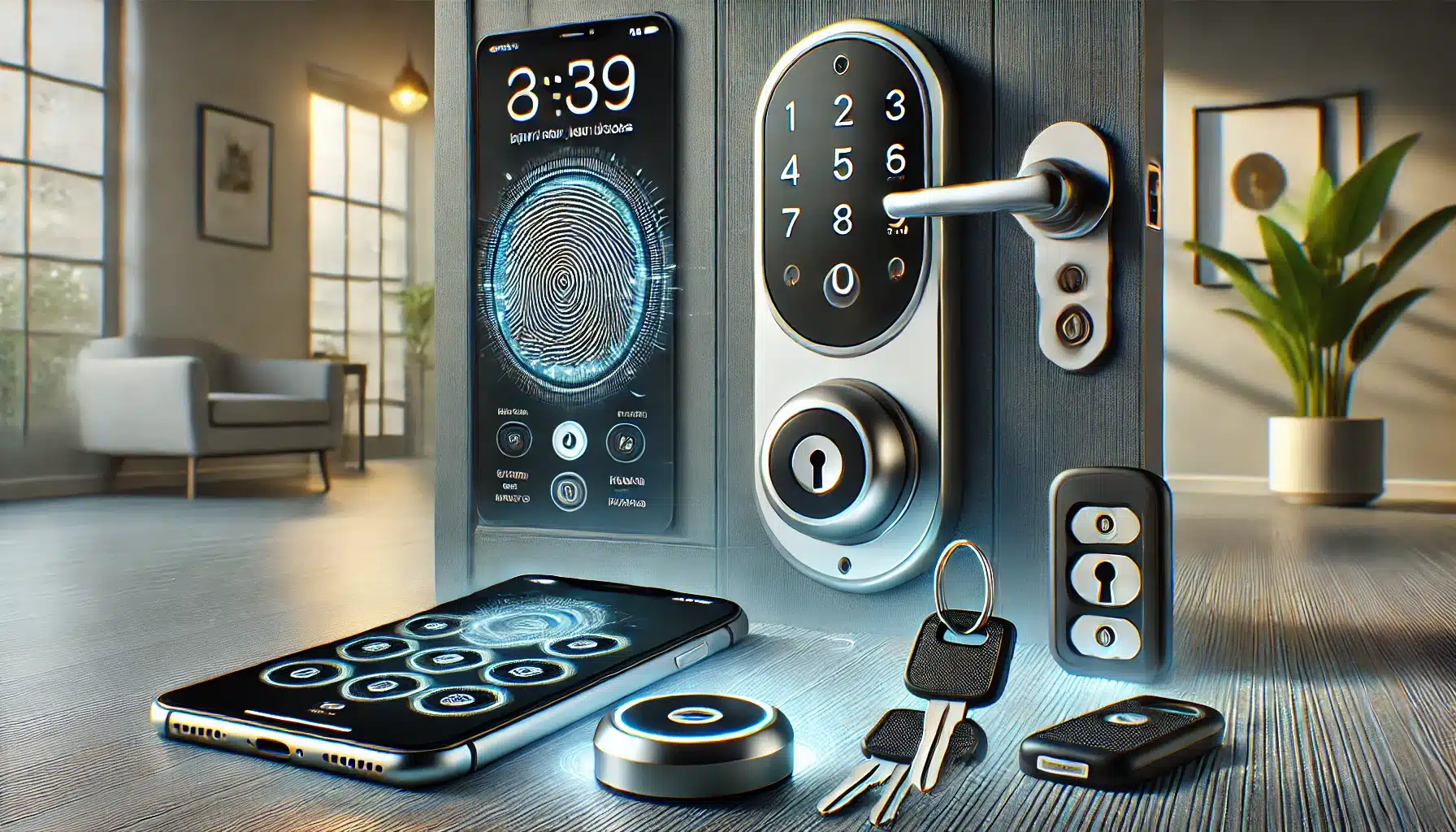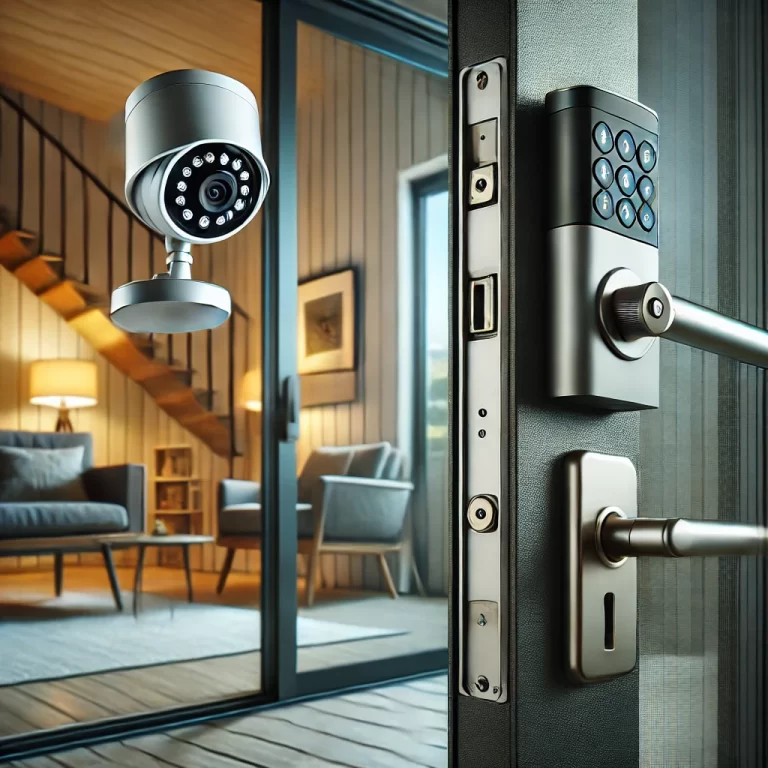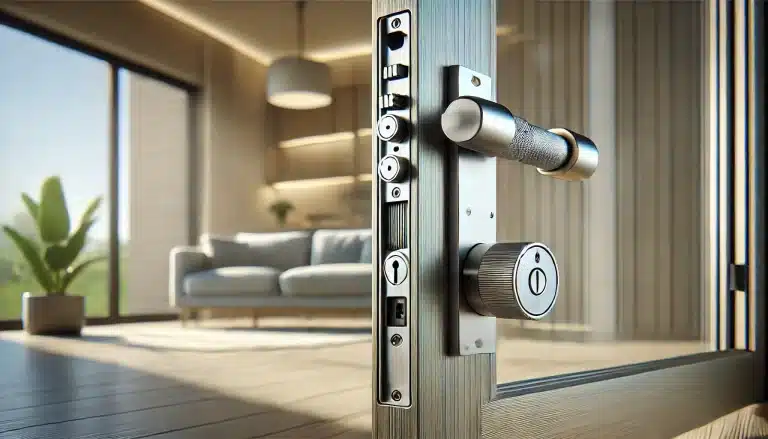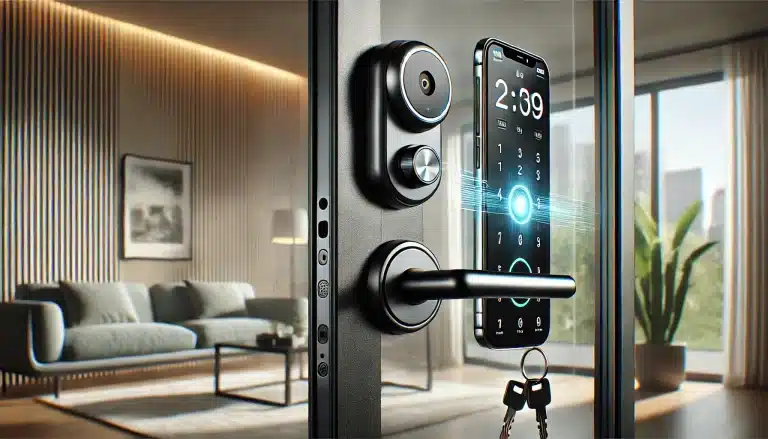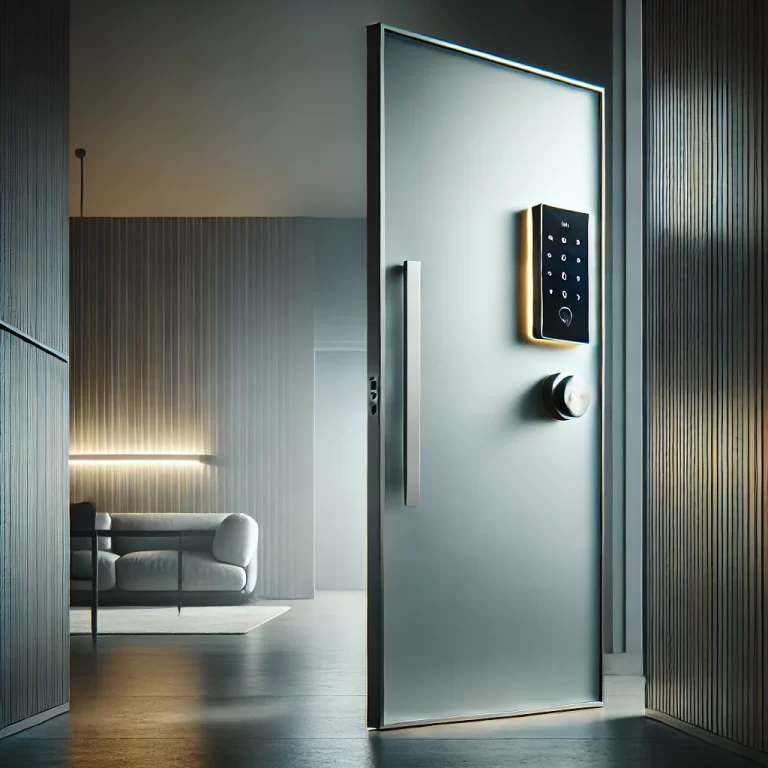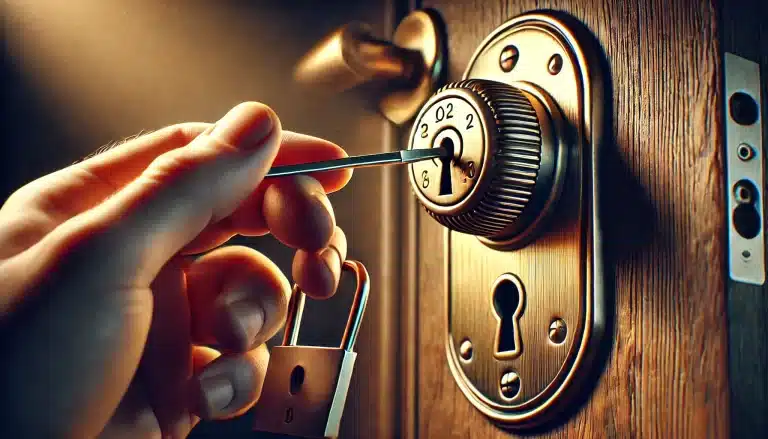2025’s Best Biometric Door Locks: Comprehensive Reviews
When it comes to upgrading your home or business security, choosing the best biometric door lock can make all the difference.
These high-tech locks offer unmatched convenience and enhanced protection, ensuring that only authorized individuals can access your premises.
If you’re looking to buy a biometric door lock, it’s crucial to consider several factors, including the lock’s features, installation process, and security level. In this biometric door lock review, we’ll take a closer look at five top-rated models, evaluating their pros and cons to help you make an informed decision.
Product Reviews
Here are the reviews of five top biometric door locks, each offering unique features.
1. Keyless-Entry Fingerprint Smart Door Lock – Sifely Digital Electronic Lock
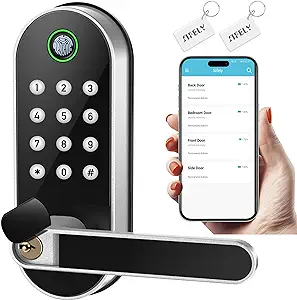
- Price: US$ 79.99
- Features:
- Fingerprint biometric lock, keypad, and passcode options.
- Ideal for exterior, interior, and bedroom doors.
- Silver finish with sleek design.
- Supports multiple entry methods (biometric, code, passcode).
- Includes an auto-lock feature.
- What I Liked:
- Versatile installation options, fitting various door types.
- Easy to use with different entry methods, including fingerprint scanning.
- Affordable compared to higher-end biometric locks.
- What I Don’t Like:
- Fingerprint sensor may be slow in certain conditions.
- Lacks Wi-Fi compatibility for remote access.
- Buy on Amazon
2. Keyless-Entry Keypad Fingerprint Smart Lock – Kucacci
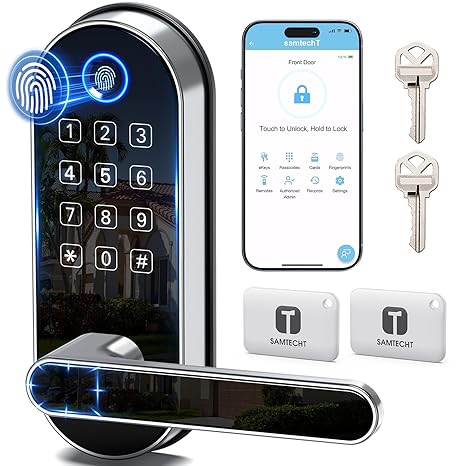
- Price: US$ 67.99
- Features:
- Biometric fingerprint access with digital keypad.
- Ideal for bedroom and entry doors.
- Simple to install with no additional tools required.
- What I Liked:
- Budget-friendly for those looking for essential features.
- Secure and compact design, ideal for smaller doors.
- Easy installation with minimal effort.
- What I Don’t Like:
- Limited features (no Wi-Fi or app integration).
- Fingerprint scanner may not perform well in cold weather.
- Buy on Amazon
3. Lockly Secure Pro Wi-Fi Smart Door Lock
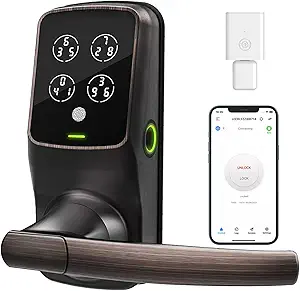
- Price: US$ 239.66
- Features:
- PIN Genie® Digital Keypad and 3D biometric fingerprint sensor.
- Wi-Fi enabled for remote control.
- Voice control and auto-locking features.
- Premium design for front doors.
- What I Liked:
- Advanced features like voice control and Wi-Fi integration.
- High-quality fingerprint sensor with 3D recognition.
- Premium build and sleek design.
- What I Don’t Like:
- Expensive, may be overkill for basic home users.
- Professional installation may be required for optimal setup.
- Buy on Amazon
4. Veise Fingerprint Door Lock – Electronic Keypad Deadbolt
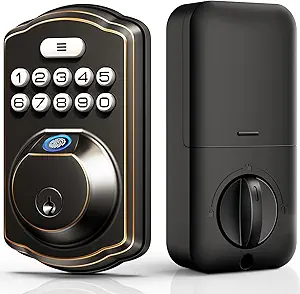
- Price: US$ 69.99
- Features:
- Keyless entry with fingerprint scanning and anti-peeking keypad.
- Auto-lock feature for added security.
- Oil-rubbed bronze finish for an elegant appearance.
- Quick installation with minimal tools.
- What I Liked:
- Affordable for the features it offers.
- Anti-peeking password option adds an extra layer of security.
- Simple and quick installation.
- What I Don’t Like:
- Limited customization compared to other high-end models.
- No app or Wi-Fi functionality.
- Buy on Amazon
5. Kucacci Keypad Smart Door Lock with Handle
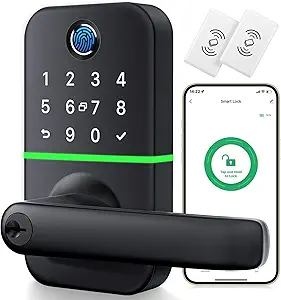
- Price: US$ 67.99
- Features:
- Keyless entry with digital keypad and fingerprint access.
- Suitable for front doors or offices.
- Alternative to traditional deadbolt locks.
- What I Liked:
- Affordable and functional.
- Stylish design and modern aesthetic.
- Easy to install.
- What I Don’t Like:
- Lack of Wi-Fi or Bluetooth for remote operation.
- Not as durable as higher-end models.
- Buy on Amazon
Which is the Best Biometric Door Lock?
After reviewing all the options, the Lockly Secure Pro Wi-Fi Smart Door Lock stands out as the best overall choice. It offers advanced security features like Wi-Fi and voice control, a high-quality fingerprint sensor, and a sleek design, making it ideal for those who need a reliable and modern lock. However, if you’re on a budget, the Veise Fingerprint Door Lock offers great value for money with essential features like fingerprint scanning and auto-locking.
What is a Biometric Door Lock?
A biometric door lock is a type of security system that uses a person’s unique biological characteristics—such as fingerprints, facial recognition, or even iris scans—to grant access. Unlike traditional locks that rely on keys or passcodes, biometric systems provide a higher level of security by utilizing features that are unique to each individual. These smart locks eliminate the need for physical keys, which can be lost, stolen, or copied.
Biometric locks can store multiple biometric profiles, making them ideal for both homes and businesses. They can also be integrated with other security systems, offering added layers of protection. Whether for your front door, bedroom, or office, biometric locks are an excellent option for modern security.
Types of Biometric Door Locks
There are several types of biometric door locks, each designed to use a specific form of biological recognition. Here are the most common types:
1. Fingerprint Biometric Door Locks
Fingerprint recognition is the most popular and widely used biometric locking system. These locks work by scanning and comparing an individual’s fingerprint to those stored in the system.
- Pro:
- Fast and reliable recognition.
- No need for keys or passcodes.
- Difficult to replicate or steal.
- Con:
- Can be less effective in dirty or wet conditions.
- May have trouble recognizing worn or damaged fingerprints.
2. Facial Recognition Biometric Door Locks
Facial recognition locks use a camera and advanced software to map the unique features of a person’s face. The system then compares this data to stored facial profiles.
- Pro:
- Hands-free access—no need to touch the lock.
- Offers a high-tech, futuristic feel.
- Ideal for businesses with high traffic.
- Con:
- May struggle with accuracy in low-light conditions.
- Could be impacted by changes in appearance (e.g., glasses or facial hair).
3. Iris or Retina Scanning Biometric Door Locks
These locks analyze the unique patterns in an individual’s eyes (either the iris or retina) to verify their identity.
- Pro:
- Extremely secure—very difficult to replicate.
- Offers one of the highest levels of biometric security.
- Con:
- Expensive compared to other biometric locks.
- Requires specialized equipment and may not be as widely available.
4. Hand Geometry Biometric Door Locks
Hand geometry systems analyze the size and shape of a person’s hand, including the length of fingers and the width of the palm.
- Pro:
- Quick and easy to use.
- Not affected by wear and tear like fingerprints.
- Con:
- Less accurate than fingerprint or retina scanning.
- Larger, bulkier scanners compared to other types.
What to Look for in the Best Biometric Door Lock
When choosing the best biometric door lock, it’s important to consider several key factors:
- Security Features: Look for locks with advanced biometric recognition systems, such as fingerprint or retina scanning, that are difficult to bypass.
- Ease of Installation: Choose a lock that’s easy to install or one that comes with professional installation options.
- Compatibility: Make sure the lock is compatible with the type of door you have (e.g., wood, metal, or glass).
- Smart Features: Some biometric locks come with additional features such as Wi-Fi connectivity, mobile app control, and auto-locking.
- Price: While biometric locks can be an investment, there are affordable options available that provide good security without breaking the bank.
Frequently Asked Questions (FAQs)
- What is a biometric door lock?
- A biometric door lock uses unique biological characteristics, such as fingerprints, facial recognition, or iris scans, to authenticate and grant access.
- Are biometric locks secure?
- Yes, biometric locks are highly secure because they rely on unique traits that are difficult to replicate. However, no system is 100% foolproof, so it’s important to consider additional security measures.
- Can biometric locks be hacked?
- While biometric locks are more secure than traditional locks, there are still potential vulnerabilities, especially if the system isn’t properly maintained or updated.
- How do I install a biometric door lock?
- Installation is generally straightforward, but it varies by model. Many locks come with detailed instructions, and some models can be installed without professional help.
- Do biometric door locks work in extreme weather conditions?
- Most biometric locks work well in a range of temperatures, but extreme heat, humidity, or cold can sometimes affect fingerprint recognition.
- How long does the battery last in a biometric lock?
- The battery life can vary, but most biometric locks typically last between 6 months to 1 year on a set of batteries. Always check the product specifications for estimated battery life.
- Can I use multiple users with a biometric door lock?
- Yes, many biometric locks allow you to store multiple biometric profiles for different users. This is ideal for families or small businesses.
- What happens if the biometric lock malfunctions?
- Most biometric locks have backup methods of entry, such as a physical key or passcode, in case of a malfunction.
- Can I use a biometric lock on any type of door?
- Biometric locks are compatible with most types of doors, including wood, metal, and glass. However, always ensure that the lock you choose fits your specific door type.
- Are biometric locks suitable for businesses?
- Yes, biometric locks are excellent for business use because they provide high security and can restrict access to authorized personnel only.

